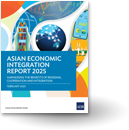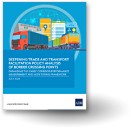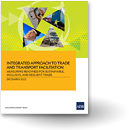US bond yield curve: Should we worry if it inverts?
In global economic growth, divergence across economies is widening. The US keeps posting robust expansion, with a whopping 4.2% of annualized quarter-on-quarter growth in Q2 2018, the fastest since Q3 2014. While Japan’s expansion picked up further in Q2, the EU’s was lackluster, losing some of the steam gained from 2017.
The picture in emerging markets is even less encouraging. Major emerging economies such as the People’s Republic of China experiencing moderation of growth following decades of spectacular expansion momentum, while Argentina and Turkey have suffered drastic plunges in their local currency values.
Stock market performances also mirror this divergence in growth momentum, with the Dow Jones Industrial Average Index maintaining a steady upward trend while most emerging market economies are undergoing sizable corrections in their stock market since the beginning of 2018.
Policy makers and academics are carefully watching how long the growth momentum of the US economy will persist, and by when the signal of the next round of economic downturn will kick in.
US bond yield curve inversion could signal economic downturn – or not
Many market observers believe that the US economy might be close to the end of the expansion cycle. And that cycle may end sooner or later after a historically lengthy phase of economic expansion, with the Federal Reserve (Fed) keeping its policy normalization pace on track and tighter credit conditions likely to ensue in the economy.
Some estimates predict the onset of the downward cycle by 2020, if not 2019. And pundits are focusing on clues from the flattening bond yield curve – and its possible inversion.
Historical experience suggests that the inversion of the US bond yield curve usually presaged the imminent onset of the economic downcycle. However, some experts argue that this time could be different, as the cause of the depressed yield of long-term US Treasury bonds could be the large demand of the dollar-denominated security given still abundant global liquidity.
The jury is out on whether history will repeat itself. Nevertheless, this issue warrants close monitoring as the U.S. economic cycle has a significant impact on the global economy, including Asia’s.
As shown in Figure 1, since 1998, the U.S. bond yield curve inverted twice, first between February and December 2000 and then between early June 2006 and early June 2007. With the ever-tightening recent yield gap, the big question is whether the yield curve will invert again anytime soon, and if so, whether it will be the prognosis of imminent downturn of the US economy.
Figures 2 and 3 show that both the 2000 and the 2006-2007 inversions foreshadowed recessions. Asia’s economic growth seems to have also been associated with this, but the depth and duration are much less pronounced than in the U.S.
Overall, the growth trajectory of Asian economies is less volatile, although the growth volatility of individual economies might be obscured in regional weighted average terms.
One stark difference between the recent trend in tightening yield spread and that of 2006-2007 is that the current episode is taking place under a much more measured policy environment. In fact, the gradual tightening yield gap coincides with the Fed’s gradual normalization of its interest rate policy since late 2015.
This measured pace should provide the Fed with more room to maneuver in case the inversion is about to materialize. The Fed might pause interest rate hikes under such conditions.
US bond yield curve may not invert even if Fed keeps interest rate hikes
A recent pickup in the 10-year Treasury bond yield is also encouraging. It might delay the onset of the curve inversion, or at least contribute to keeping a flat but still positive slope for a protracted period.
In addition, although the front end of the curve should be more closely linked to the benchmark interest rate, over time we might find that the long end becomes more aligned with the gradual rise of the benchmark interest rate. This could be in response to looming inflationary pressures from robust investment and consumption sentiment, as well as the potential ripple effect of the higher tariffs on prices of imported intermediate and consumer goods in the US.
Bond yield curve dynamics in the US will likely attract continued attention from emerging markets, including Asia. However, the policy environment and credit conditions surrounding flattening yield curve now seem to be different from when the past inversions happened.
Furthermore, unless the Fed dismisses its measured normalization approach, we may not encounter an inversion anytime soon – let alone its ripple impact on the growth momentum of emerging economies.
Original article was published at the ADB Blog and duplicated here with permission from the author.
In global economic growth, divergence across economies is widening. The US keeps posting robust expansion, with a whopping 4.2% of annualized quarter-on-quarter growth in Q2 2018, the fastest since Q3 2014. While Japan’s expansion picked up further in Q2, the EU’s was lackluster, losing some of the steam gained from 2017.
The picture in emerging markets is even less encouraging. Major emerging economies such as the People’s Republic of China experiencing moderation of growth following decades of spectacular expansion momentum, while Argentina and Turkey have suffered drastic plunges in their local currency values.
Stock market performances also mirror this divergence in growth momentum, with the Dow Jones Industrial Average Index maintaining a steady upward trend while most emerging market economies are undergoing sizable corrections in their stock market since the beginning of 2018.
Policy makers and academics are carefully watching how long the growth momentum of the US economy will persist, and by when the signal of the next round of economic downturn will kick in.
US bond yield curve inversion could signal economic downturn – or not
Many market observers believe that the US economy might be close to the end of the expansion cycle. And that cycle may end sooner or later after a historically lengthy phase of economic expansion, with the Federal Reserve (Fed) keeping its policy normalization pace on track and tighter credit conditions likely to ensue in the economy.
Some estimates predict the onset of the downward cycle by 2020, if not 2019. And pundits are focusing on clues from the flattening bond yield curve – and its possible inversion.
Historical experience suggests that the inversion of the US bond yield curve usually presaged the imminent onset of the economic downcycle. However, some experts argue that this time could be different, as the cause of the depressed yield of long-term US Treasury bonds could be the large demand of the dollar-denominated security given still abundant global liquidity.
The jury is out on whether history will repeat itself. Nevertheless, this issue warrants close monitoring as the U.S. economic cycle has a significant impact on the global economy, including Asia’s.





